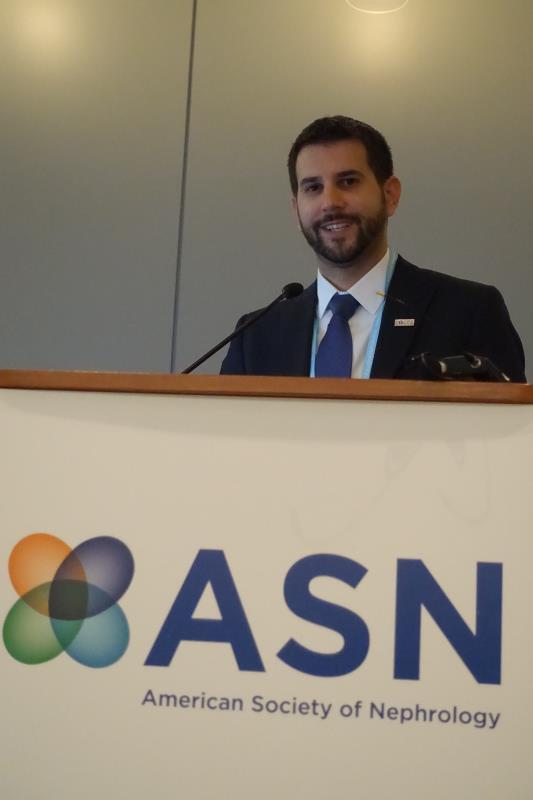 Dr Angelo Karaboyas from the Arbor Research Collaborative for Health in Ann Arbor, Michigan, US
Dr Angelo Karaboyas from the Arbor Research Collaborative for Health in Ann Arbor, Michigan, USExcursions of serum potassium levels above the normal range pose an increased risk of death to haemodialysis patients, with the risk increasing progressively according to the number of hyperkalaemia (HK) episodes regardless of the threshold, according to data from the DOPPS* study presented at the American Society of Nephrology (ASN) Kidney Week 2019.
“HK has been associated with adverse clinical events in haemodialysis patients when analysing a single potassium measurement or time-averaged…values, but the mean value of serial predialysis potassium measurements does not reflect variability or excursions out of potassium target range,” said lead researcher Dr Angelo Karaboyas from the Arbor Research Collaborative for Health in Ann Arbor, Michigan, US.
Karaboyas and colleagues used data from 21 countries in phases 4–6 (2009–2018) of DOPPS to assess the number of HK excursions over 4-month periods using the following definitions of serum potassium levels: >5.0, >5.5 and >6.0 mEq/L.
The analysis included 243,886 4-month periods across 61,897 haemodialysis patients. Within a 4-month window, the prevalence of at least one HK excursion was 58 percent, 30 percent and 12 percent, respectively, for serum potassium levels of >5.0, >5.5 and >6.0 mEq/L. [ASN Kidney Week 2019, abstract SA-OR067]
HK excursions at >5.5 mEg/L occurred commonly in Russia (68 percent) and not too often in the US (25 percent). Patients with vs without HK excursions were more likely to be younger, have longer haemodialysis vintage, and show higher serum levels of albumin and phosphorus.
Multivariable Cox regression models demonstrated an elevated mortality risk over the subsequent 4 months of HK excursions relative to 4-month periods with no HK excursions. Specifically, the risk was 10–20 percent higher in the presence of one HK excursion even at only >5.0 mEq/L, and increased by 20–30 percent in the presence of two or more HK excursions.
As pointed out earlier, the present data show clear evidence that one or more HK episodes are associated with heightened all-cause mortality regardless of the HK threshold. “This method to assess target potassium achievement may be more sensitive at identifying patients with greater mortality risk over short-term intervals at lower thresholds (5.1–5.5 mEq/L) than previously reported,” Karaboyas said.
Therefore, existing HK severity ranges should be reassessed and further research exploring strategies to avoid HK excursions be conducted, he added.
*The Dialysis Outcomes and Practice Patterns Study